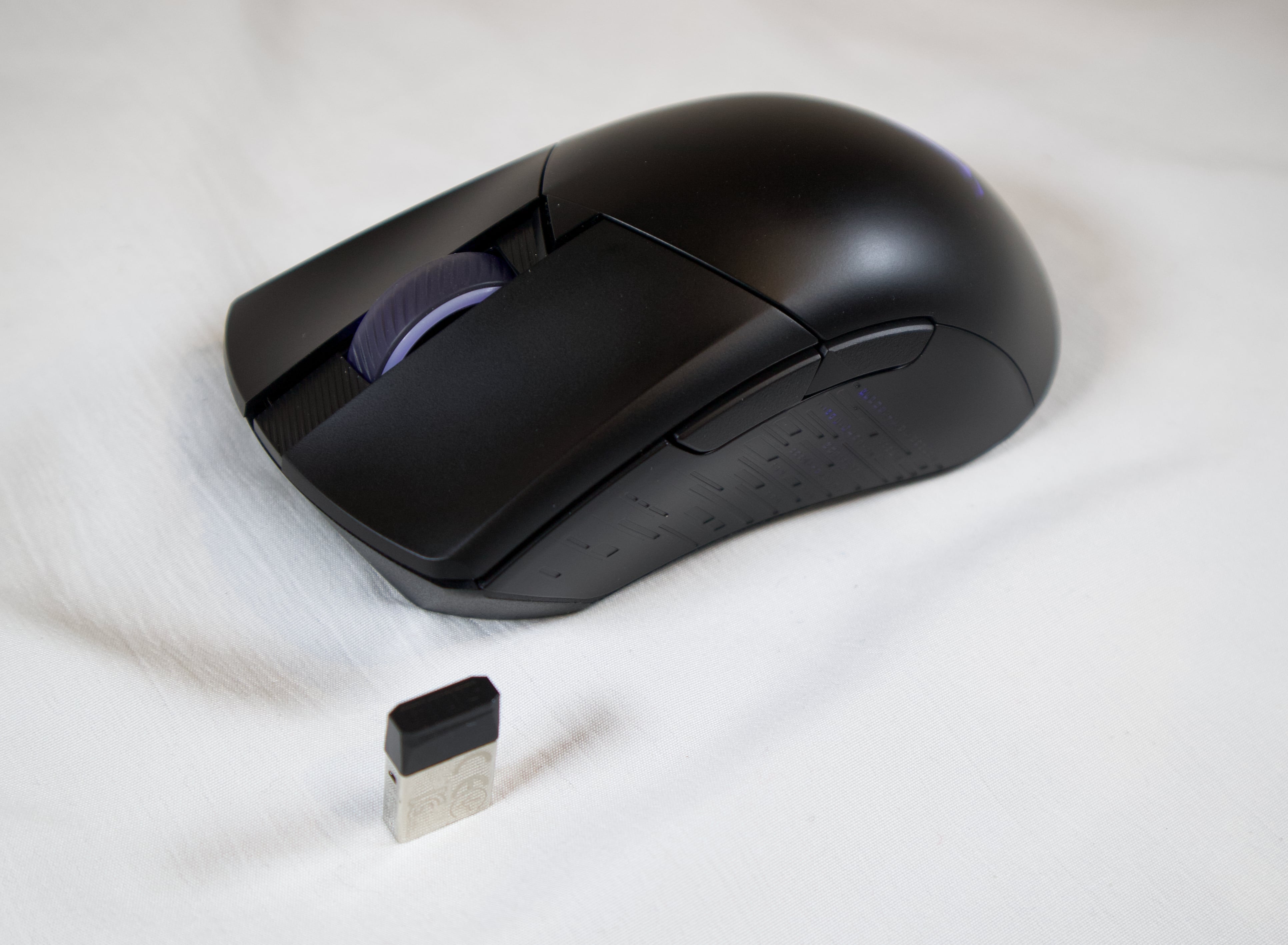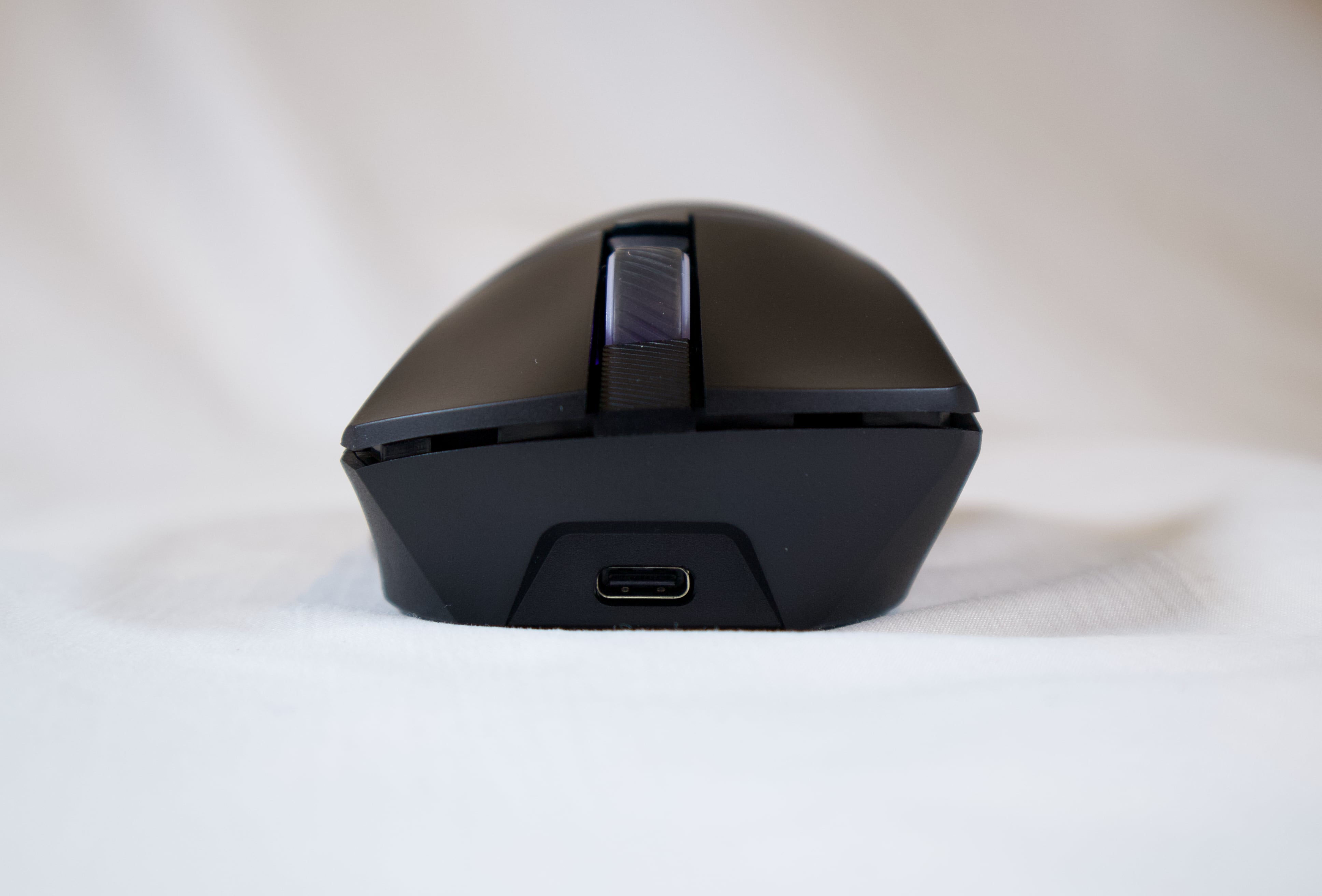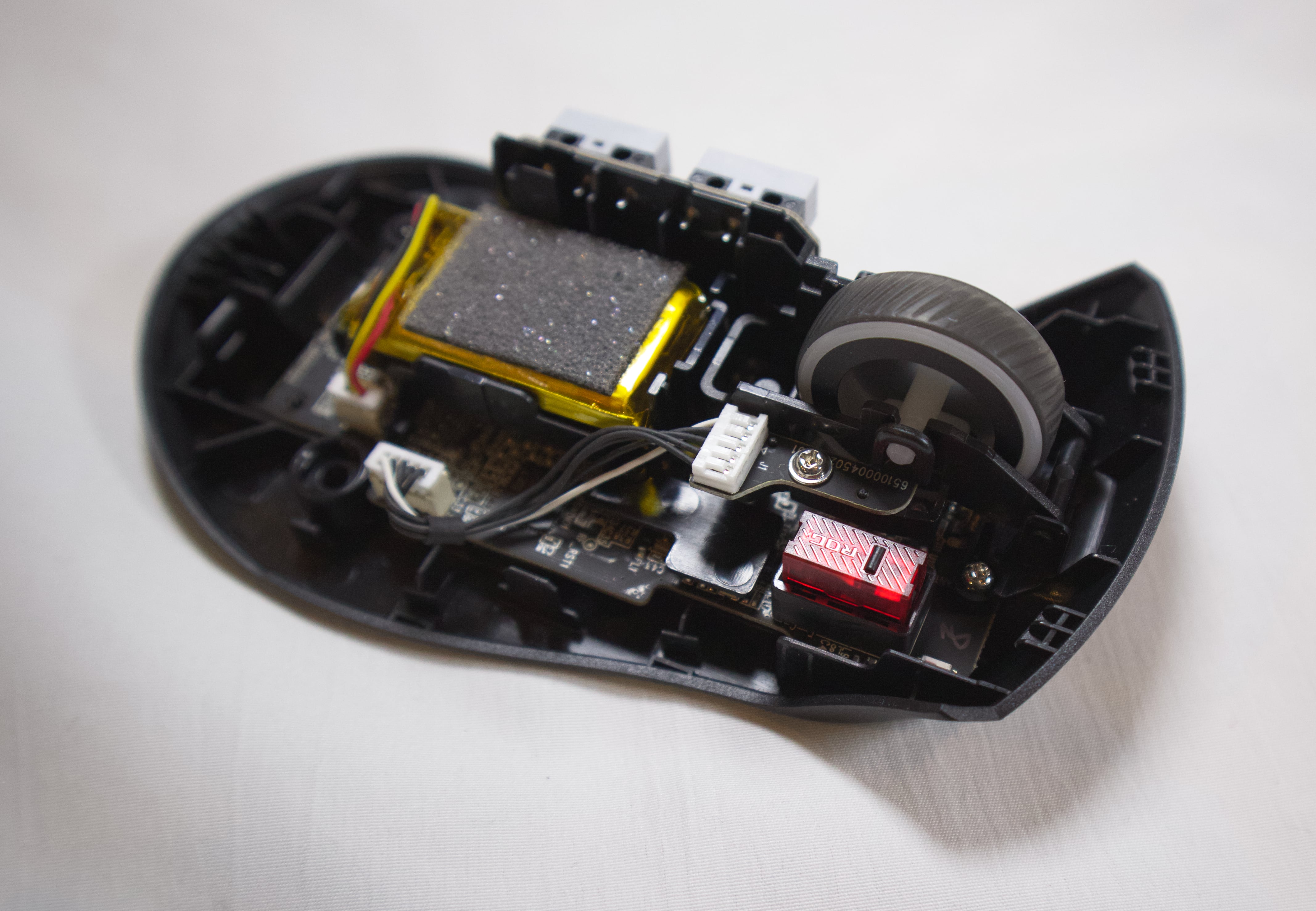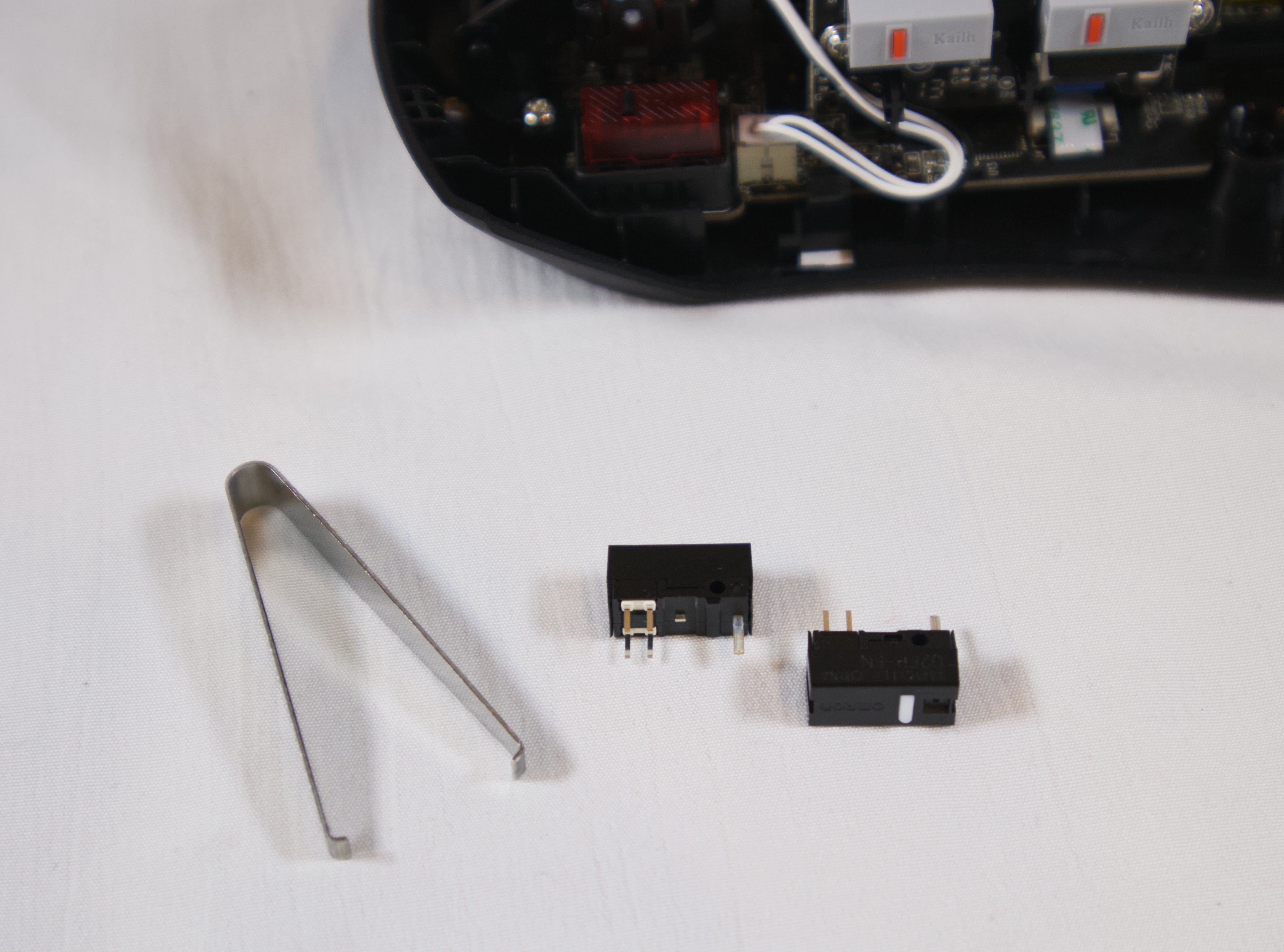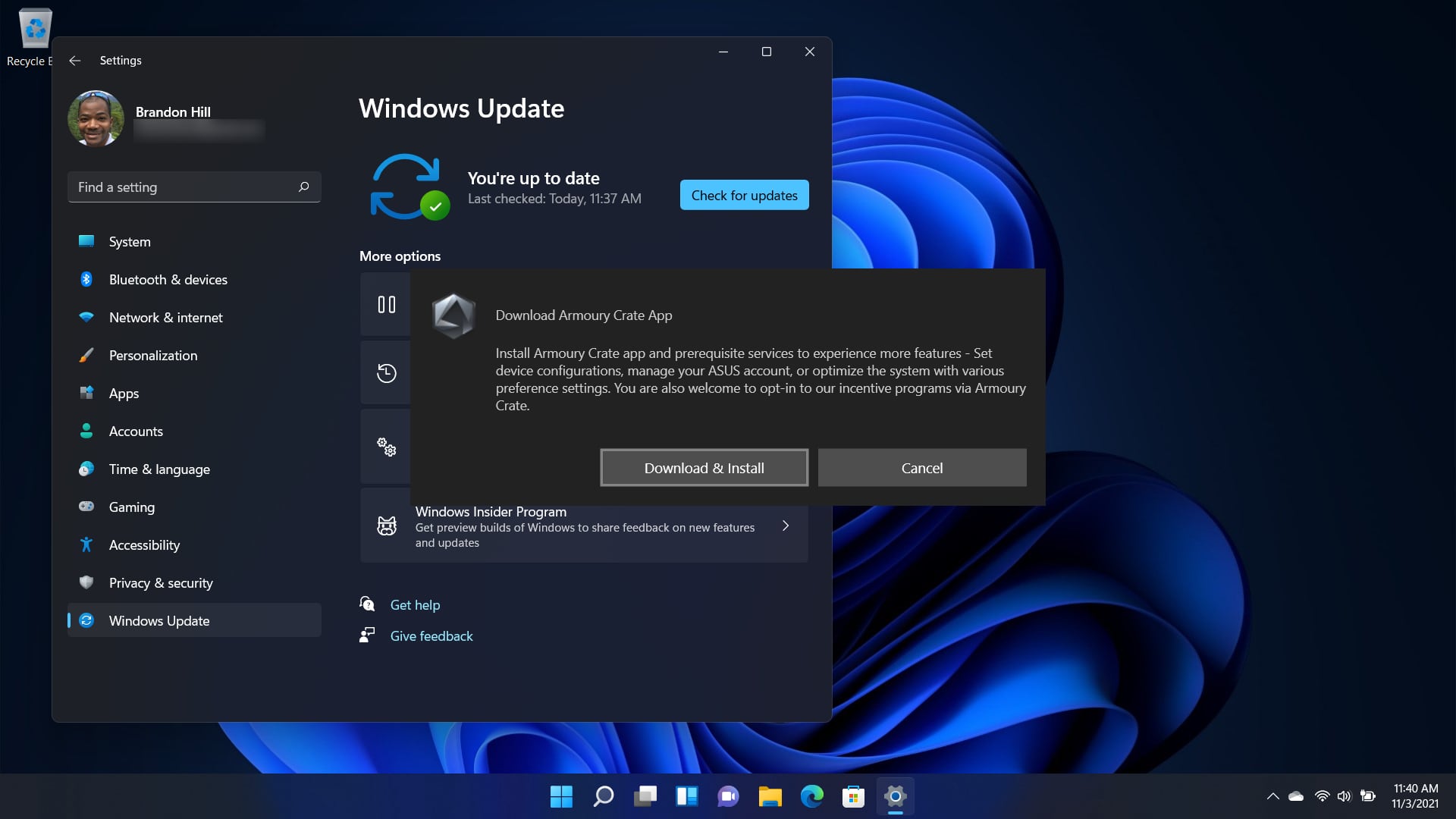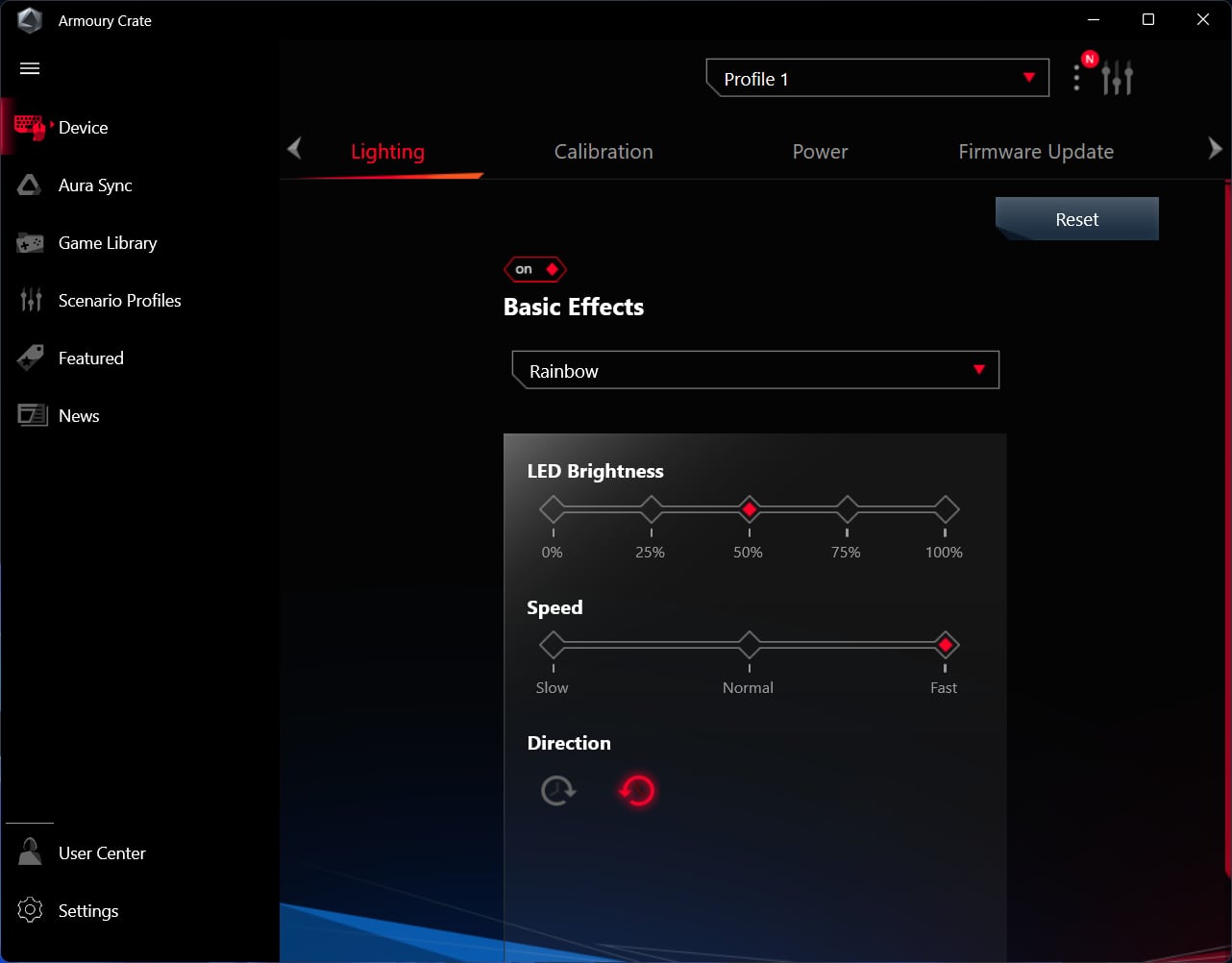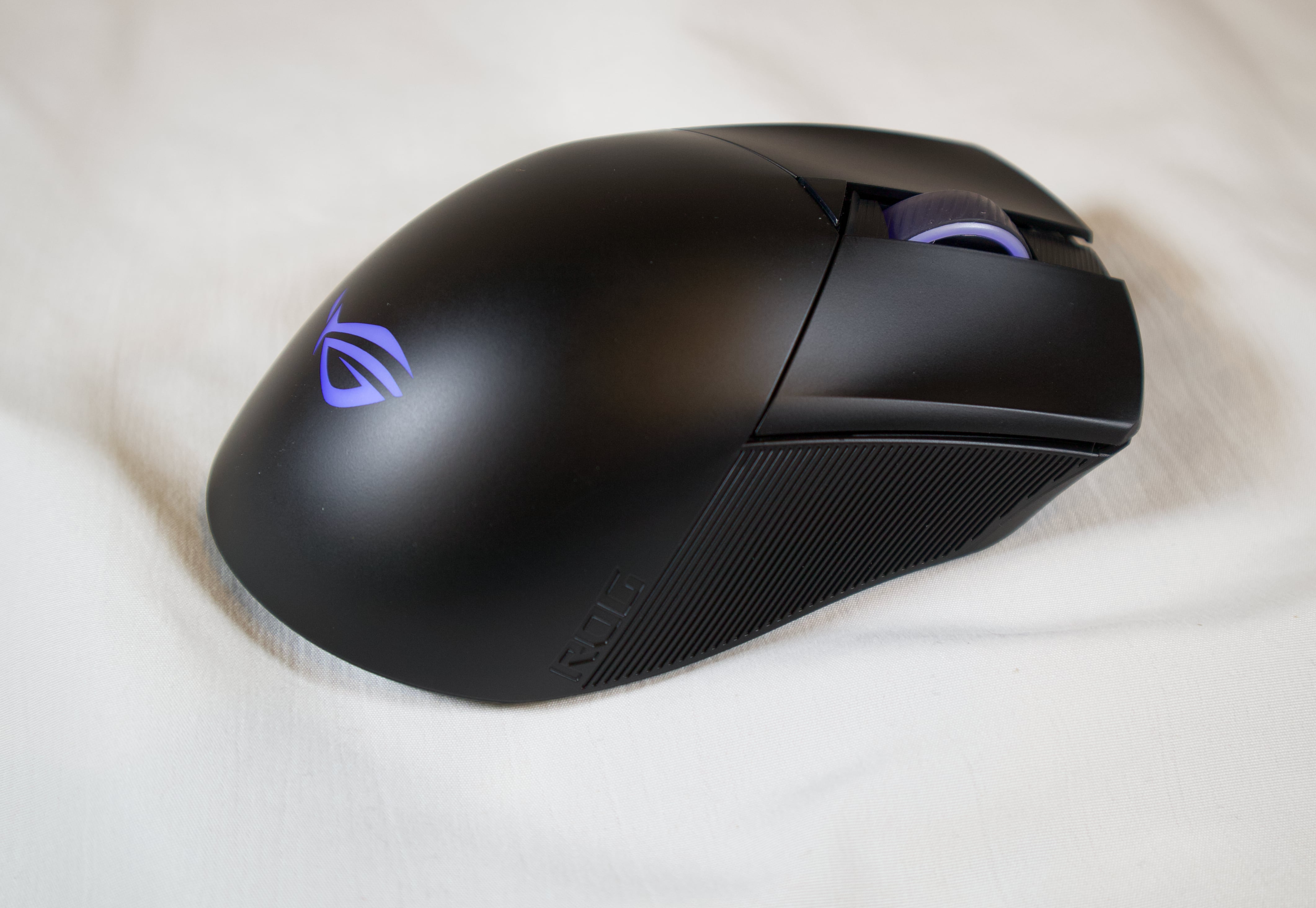Tom's Hardware Verdict
At $119.99 the Asus ROG Gladius III offers USB-C, Bluetooth and 2.4 GHz connectivity along with trick swappable switches to customize your gaming experience. It presents as a worthy competitor to the Logitech Pro X Superlight.
Pros
- +
+ Nicely balanced design for right-handed gamers
- +
+ Hot-swappable switches for right/left buttons
- +
+ Excellent overall performance with up to 26,000 DPI
- +
+ Configurable for USB, 2.4 GHz or Bluetooth connectivity
- +
+ Swanky three-zone Aura Sync RGB lighting effects
Cons
- -
Expensive compared to similar gaming mice
- -
Heavier than other elite gaming mice
- -
Despite its heavier design, the plastic feels a bit cheap
Why you can trust Tom's Hardware
The Asus ROG Gladius III wireless mouse has a lot going for it, including good looks, three RGB lighting zones with Aura sync, plenty of connectivity options, and hot-swappable switches for the left/right mouse buttons. However, its high price tag puts it in close competition with the best wireless gaming mice out there, which arguably bring more to the table for diehard gamers.
Specs
| Sensor Model | Optical |
| Max Sensitivity | 19,000 DPI (26,000 via software) |
| Polling Rate | 1000Hz |
| Programmable Buttons | 6 |
| LED Zones | 3 RGB Zones |
| Cable | 6.56 feet (2m) Paracord Cable |
| Connectivity | RF 2.4 GHz, Bluetooth LE, Wired |
| Measurements (LxWxH) | 4.96 x 2.64 x 1.77 inches (126 x 67 x 45mm) |
| Weight (excluding Wifi) | 0.2 pounds (89g) |
| Price | $119.99 |
Design
I’m by no means what you’d call a hardcore gamer and my venerable “daily driver” is a relatively small Razer Atheris wireless ambidextrous mouse. The ROG Gladius III is much larger in comparison and better fits my palm. I typically “claw” my Atheris (meaning I don’t rest my palms on it), but I can gently “palm” the ROG Gladius III when using it. I can’t say which I prefer better, but the larger footprint of the Gladius III is by no means a detriment in my eyes.
The ROG Gladius III is designed for right-handed gamers, so lefties will likely want to look elsewhere. Around the outside of the mouse, you'll find a nice grip section on the left-hand side that is enhanced with RGB lighting. Interestingly, a few phrases are backlit in the grip areas such as "Republic of Gamers" and “Dare to Play," which gives it a distinctive look. The two side buttons sit directly above this area. Moving around to the front of the mouse, you'll find a single USB-C port that’s used for charging. On the right side of the mouse, there's another grip area.
On the top of the ROG Gladius III, you'll find the two primary buttons, the RGB-enhanced scroll wheel, a triangular button for adjusting DPI on the fly, and another RGB zone towards the back of the mouse where your palm naturally rests. You’ll see a switch on the bottom for choosing between wired, 2.4 GHz and Bluetooth operating modes, plus a pairing button for Bluetooth and a profile button. There's also a magnetic silo to hold the 2.4 GHz wireless USB dongle when not in use.
My biggest issue with the design of the ROG Gladius III relates to its build quality. While I appreciate the lightness when flicking the mouse around, it feels a bit cheap -- this sentiment was shared in our ROG Strix Impact II Electro Punk review. The plastic is thinner and more hollow than on the wireless mice that I’ve been more drawn to before, but this is just a side effect of Asus’ aim to make the mouse as light as possible. I personally prefer heavier, more dense mice.
Hot-Swappable Switches
What makes the ROG Gladius III stand out is that it features hot-swappable switches for the right and left click buttons. If you’re a heavy gamer, it’s not uncommon to find that mouse switches wear down after a few years of use. Asus’ decision to allow the switches – via the Push-Fit Switch Socket II -- to be swapped addresses longevity concerns and allows you to customize the click feedback.
The ROG Gladius III improves upon the ROG Chakram – which also allows you to change the switches – as it is compatible with both 3-pin Asus mechanical micro switches (rated for 70 million clicks) and 5-pin Omron optical micro switches. The mouse ships with the 3-pin mechanical switches (seen in red above) already installed. In addition, an extra set of 5-pin Omron D2FP-FN optical switches are included in the box (seen in black below).
Get Tom's Hardware's best news and in-depth reviews, straight to your inbox.
Accessing the inside of the mouse is relatively easy. There are two rubber grommets on the bottom flanking the profile button. Removing the grommets reveals two Phillips head screws, which, once removed, allow the entire top panel to be pried off using your fingernails.
With the top removed, you can view all the mouse’s innards, including the non-removable switches for the left-mounted forward/back buttons, the battery, LEDs for the three RGB zones, and, of course, the Push-Fit Switch Socket II mounted on either side of the scroll wheel.
Here’s one other item of note while we’re talking about the inside of the ROG Gladius III: the battery is easily replaceable after removing its power connector from the circuit board. However, finding a suitable replacement might be a bit of a chore.
Asus provides a set of small metal tongs to remove the switches, although I easily removed them using my fingers. I tried both sets of switches but preferred the more “clicky” feel of the mechanical variety rather than the softer operation of the optical switches.
Asus Armoury Crate Software
On my Windows 11-based test system, I was able to easily pair the mouse via Bluetooth. Next, I visited Windows Update, which downloaded driver updates for the Asus mouse and, curiously, an Asus keyboard (which I don’t have installed). Next, a prompt automatically appeared asking me to download the Armoury Crate app from Asus. The app initially didn’t find the mouse when connected via Bluetooth, so I switched to 2.4 GHz, which worked. I performed several software updates and a mouse firmware update to get up to speed.
With that out of the way, I could navigate the Armoury Crate UI and customize the ROG Gladius III to my liking. Not only could I adjust the DPI up to 26,000 with the software, but I could also calibrate lift-off distance, adjust power savings controls and customize lighting effects (LED brightness, color, speed, direction, etc.). There’s also 4 profiles, for saving multiple configurations.
The ROG Gladius III allows you to connect it to 4 devices at once, and swap between them with a simple press of a button. For my next device, I pressed the pair button on the ROG Gladius III and was able to pair the mouse with an M1 MacBook Air running macOS Monterey without issue. I then used the third onboard profile to pair the ROG Gladius III with an 11-inch iPad Pro (2021) running iPadOS 15.1. Switching between the three profiles was as simple as pressing the pair button. Conveniently, the LEDs glow in Blue, Red, or Purple to signify which host is connected to the mouse.
Performance
Powering the mouse is a 19,000 DPI optical sensor, but it can be tuned up to 26,000 DPI using Asus ROG software. You’ll also find that it tracks up to 400 inches per second and can sustain acceleration up to 50 G. As for connectivity, Asus gives you three choices. You can use the included braided USB-C to USB-A cable for wired operation, Bluetooth or 2.4 GHz wireless.
Gliding the mouse around and flicking it during gaming sessions was easy to pull off with aplomb thanks to the four Teflon PTFE pads on its underside. They are removable, and Asus provides a second set in the package (along with other goodies like ROG stickers), which is a nice touch.
Having a lightweight design is a boon for gaming, and the ROG Gladius III doesn’t disappoint in this area. At 89 grams, it’s a little heavier than some of the lightest elite gaming mice out there, but I did not find this extra heft to be objectionable. Combining the lightweight construction and ergonomic design with the PTFE feet allowed the mouse to glide with ease. I found myself quickly flicking the ROG Gladius III to tag headshots in Fortnite and Doom Eternal a lot, which was always a gratifying experience.
I should also note that battery life will vary widely depending on which connection standard you choose. Opting for 2.4 GHz wireless offers improved latency and is likely the preferable solution for most gamers. Battery life comes in at just 55 hours with this setup. However, if you go with Bluetooth, battery life jumps to a stellar 85 hours (albeit at the expense of outright precision). And you still have the option of plugging in the USB cable to recharge while you continue to game (or work).
Bottom Line

The Asus ROG Gladius III is a respectable gaming mouse with a comfortable design (as long as you are right-handed), good gaming performance, and decent battery life. Being able to recharge the mouse while using it in wired mode is also a big plus. But of course, the real reason to purchase the ROG Gladius III is because of its hot-swappable switches, which are a neat party trick.
With a price tag of $119.99, are the replaceable switches worth that price premium over competing mice in this segment? That's going to be up to you to decide. I preferred the mechanical switches installed from the factory, so the included optical switches would be a waste for me.
In that case, I'd probably be just as happy with something like the MSI Clutch GM41 ($95), which offers comparable performance for a lot less. But if you are in the market for a high-performance mouse with the customization that the ROG Gladius III offers, it’s a relative bargain compared to the highly-rated Logitech Pro X Superlight ($149.99).

Brandon Hill is a senior editor at Tom's Hardware. He has written about PC and Mac tech since the late 1990s with bylines at AnandTech, DailyTech, and Hot Hardware. When he is not consuming copious amounts of tech news, he can be found enjoying the NC mountains or the beach with his wife and two sons.

